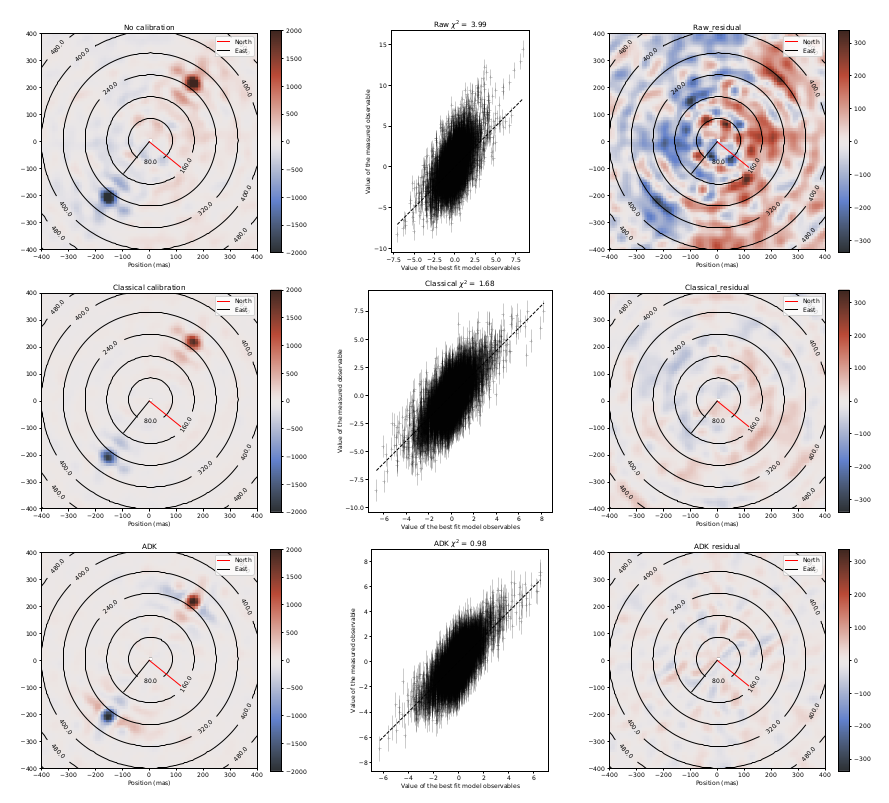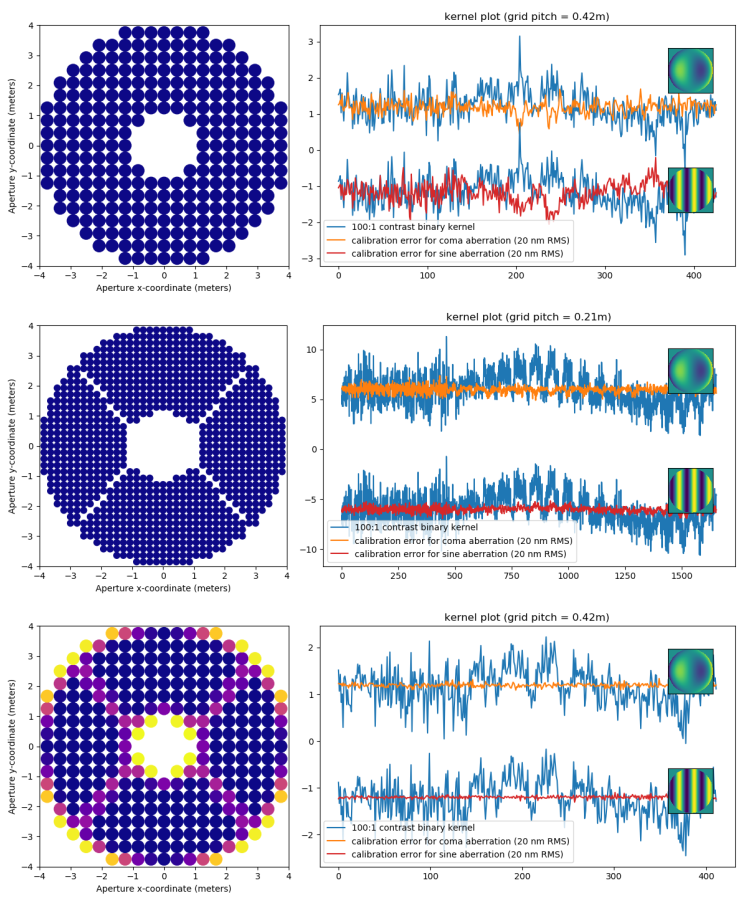The April 2020 issue of Astronomy & Astrophysics will feature two papers from the Nice KERNEL team!
Paper #1: Angular Differential Kernel-phase
The first paper features the results of a study led by graduate student Romain Laugier who’s successfully adapted an angular differential observing technique commonly used in high-contrast imaging to the kernel-phase scenario. This approach, coined angular differential kernel-phase (ADK) takes advantage of the sky rotation experienced by the SCExAO instrument at the Nasmyth focus of the Subaru Telescope when the field rotator is turned off. The technique makes it possible to better calibrate the biasing effect introduced by AO-residuals in the presence of quasi-static aberrations. Whereas interferometric observations typically require to alternate between a target of interest and a calibration star, this new approach spends 100% of the observing time on the target of interest, making it a more efficient alternative.

The publication is available in open access on the Astronomy and Astrophysics website!
Paper #2: Kernel-phase… version 2.0?
The second paper features the result of a study led by KERNEL project PI Frantz Martinache. This paper goes back to the roots of kernel-phase. After several years of development of the XARA pipeline carried out in the context of the KERNEL project, it was time to revisit previous analysis results in the light of its latest developments. The paper shows that while overall successful, early uses of kernel-phase were not particularly careful. The paper shows that refined descriptions of the diffractive apertures by instruments leads to a major improvement of the kernel-phase analysis and reduces the importance of systematic errors.

Using these new aperture modeling prescriptions, the authors then reprocess previously published observations from ground-based and space-borne observatories and shows major improvements in both cases!
In the same vein as the ADK idea at the core of the Laugier et al (2020) publication, the paper quickly explores the possibility offered by consecutive observations at multiple wavelengths. For a target whose aspect would change depending on the wavelength, spectral differential kernel-phase (SDK?) would be a powerful observing mode that would spend
The publication is of course also available in open-access on the Astronomy & Astrophysics website!
